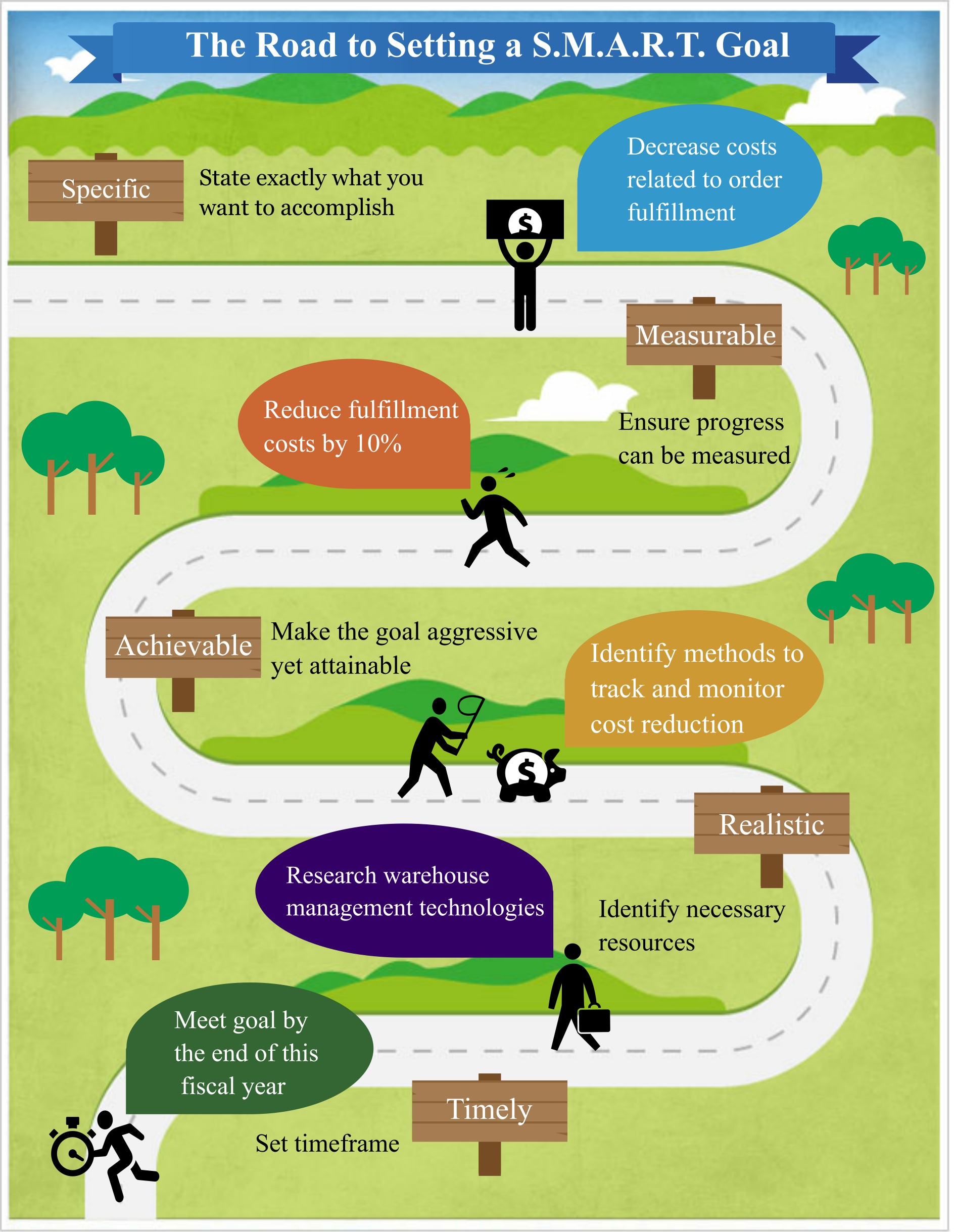![Supply Chain: 4 Essential Year End Questions to Ask Yourself [Infographic]](https://fronetics.com/wp-content/uploads/2024/10/supply-chain-year-end-questions-900x675.jpg)
by Fronetics | Oct 27, 2015 | Blog, Data/Analytics, Leadership, Strategy, Supply Chain

As the new year approaches, don’t overlook the valuable information you can glean from conducting a year-end review.
Don’t start the new year without asking these 4 essential questions.
What were my biggest accomplishments this year?
Twelve months can seem like a long time when you consider everything that happened over the course of the last 365 days. Setting aside some time to review successful projects, notes of thanks from clients, or a particularly positive performance review reminds us what we’re capable of achieving and gives us a renewed sense of accomplishment.
Try this: Designate a file folder near your workspace to collect any materials or notes related to your successes as they occur. Doing so will make it easier for you to recall your accomplishments and provide quick access to a list of your achievements – helpful for a healthy dose of motivation or last-minute performance reviews.
How satisfied are you with the past year?
Were you successful in meeting the majority of your goals? Do you feel that you worked to your highest potential? Would you have done something differently? What about missed opportunities? Examining what went right and identifying areas for growth and opportunity are powerful exercises that both prevent the recurrence of negative behaviors and reinforce our commitment to priorities.
Try this: Thinking about your experiences of the past year in sum, try to assign a value to your entire year. How would you rate your year on a scale from 1 to 10? 1 to 100? Why? Adding some context to your experiences presents a more accurate picture of your year by tempering unusual highs and lows.
Is my current daily routine structured to make time for my priorities?
It’s easy to fall victim to time suckers, especially when they become ingrained into your routine. Has your daily 15 minute coffee break gradually morphed into 25 minutes? Are your 10 minute “headline scans” now closer to 30 minutes? These small, seemingly innocent extensions can snowball into major time loss, causing unnecessary panic as you scramble to meet deadlines.
Try this: The start of a new year is a great time to reset (or rethink) our daily routines. Build activities into your day. If you’d like to continue your now-daily 25 minute coffee break, think about extending your work day by 25 minutes. Feeling like you can’t absorb everything news-worthy in less than 30 minutes? Set your morning alarm 30 minutes earlier so you can arrive to work having already completed your scan of daily headlines. By taking a hard look at where your time is actually going and then spending a few minutes realigning your daily routine with your priorities, you’re intentionally and consciously assigning time to the things you find the most important.
What is it that I want to achieve next year?
Each new year brings with it a renewed energy to being our best selves. In order to get started, we need to define our priorities and what our success will look like. Setting SMART goals, or goals that are specific, measurable, achievable, realistic, and timely, keeps us moving forward by providing accountability.
Try this: After reviewing your past year, set aside some time to consider what you’ll set out to achieve this year. Create a detailed roadmap to successful completion of your goals.
Use this infographic to help you set, and achieve your SMART goals.

How was your year in review? What were your biggest accomplishments? Are there any goals that you’ll carry over into the new year? Do you regularly set aside time at the close of a year to reflect? We’d love to hear what you do to reset for a new year.
Fronetics Strategic Advisors is a leading management consulting firm. Our firm works with companies to identify and execute strategies for growth and value creation.
We advise and work with companies on their most critical issues and opportunities: strategy, marketing, organization, talent acquisition, performance management, and M&A support.

by Fronetics | Oct 22, 2015 | Blog, Leadership, Strategy, Talent

Do we need to rethink the concept of happiness at work?
Do you like your job? It can be a complex question to answer when everything is taken into account. For some people that question is comprised of several other questions, many of which have different answers: If I could do anything with my life would I be working this job? Is this job my passion? Would I work as many hours if I didn’t have to? Do I feel productive? Is my work/life balance ok? Am I happy?
On average, Americans put in about 1,700 hours a year, which is much more than the French and Germans, but much less than the Koreans or Singaporeans. For Americans, this breaks down to 34.4 hours a week considering vacation time and holidays, however many adult, full-time employees report working more than 34 hours week. According to a Gallup poll, 4 in 10 workers reported putting in 50+ hours per week. So are all these hours bringing us happiness? First, let’s have a look at what happiness is.
People have always had a lot to say about happiness. Artistotle said, “Happiness depends upon ourselves.” Albert Camus said, “You will never be happy if you continue to search for what happiness consists of. You will never live if you are looking for the meaning of life.” The Dali Lama says, “Happiness is not something ready made. It comes from your own actions.” What is certain is that we seem to have a happiness obsession. We want it, we seek it, we’re told we need it so we believe we need it.
Harvard psychologist, Dan Gilbert, believes that happiness is not always entirely in our control and not entirely out of our control, and sometimes we feel it and sometimes we don’t. That’s ok, he says. In a TED Talk on happiness he says, “Happiness doesn’t last that long. Happiness is an emotion — it’s a feeling. The human brain isn’t built to sustain a feeling over the long term…Your emotions are a compass. They’re telling you which direction to go in. When you feel bad you turn left, you try something different in your life. When you feel good you keep on marching in the direction you’re going. What good would a compass be if it were perpetually stuck on north?”
So if we can’t feel happy all the time, and we don’t need to feel happy all the time, then why are we told we should feel happy all the time? Workplaces have been increasingly focused on employee happiness. Several studies have shown that happy employees are more productive and more loyal. Even tycoon Richard Branson is on board with this idea, “Your employees are your company’s real competitive advantage. They’re the ones making the magic happen—so long as their needs are being met.” How can the Virgin god be wrong?
A new article in the Harvard Business Review has gathered many studies and theories opposing the contemporary idea that happiness in the workplace is the key to success. The authors point to studies that show that people fail to feel happy when they are expected to be happy, that people can become emotionally vulnerable and needy when they expect their workplace to fulfill their happiness, that people may be more selfish when happy, and that people who value happiness often feel lonelier. The studies also pointed out that angry employees were better at negotiating than happy employees and better at intuiting actions of deception.
Perhaps our thinking about happiness needs to shift. Perhaps we don’t need employees bounding around the office with endless smiles. Perhaps the expectation we have for employees to be happy, and employers to be responsible for that happiness, is all too much. According to Dr. Vanessa Boute, a social psychologist, “One of the misconceptions about happiness is that happiness is being cheerful, joyous, and content all the time; always having a smile on your face. It’s not – being happy and leading rich lives is about taking the good with the bad, and learning how to reframe the bad.”
Fronetics Strategic Advisors is a leading management consulting firm. Our firm works with companies to identify and execute strategies for growth and value creation.
We advise and work with companies on their most critical issues and opportunities: strategy, marketing, organization, talent acquisition, performance management, and M&A support.

by Fronetics | Oct 20, 2015 | Blog, Leadership, Logistics, Strategy, Supply Chain, Talent

It’s common to think of the people who work for a company as “employees”, but reframing language and thinking could be critical to your supply chain. Start considering your employees as “talent”. The word employee has the connotation of working for someone or under someone. It implies being one of many, whereas the word talent has a positive connotation, implying that a person has depth, value, and potential. The term talent empowers both employees and companies to be the best and seek the best in their work and their search for other skilled people.
Reframing is an important step, but it doesn’t fix common problems that plague supply chain managers and human resource departments. It’s important to think about hiring processes as a long undertaking that extends beyond an ad, job interview, and offer letter. Companies should always be thinking about retention and promotion. This is called succession planning.
According to a study conducted by supply chain management researchers at Auburn University and Central Michigan University, 37.5% of surveyed companies had no engagement in succession planning, 27% had just started to work on planning, 23% engaged in informal planning, while only 12.5% engaged in formal succession planning.
Acquire
The supply chain is notorious for having a dearth of talent. The area is growing and more talent will need to be acquired for businesses to compete. As job titles expand and shift, due to the rapid changes in supply chain management and technological requirements, many people won’t be qualified for their own job title. Looking towards universities who are teaching supply chain management, and looking to other business sectors could be critical to find the right, flexible kind of talent the supply chain will need. Considering women for these traditionally male-dominant roles will also be important as women tend to be strong in many of the soft skills needed for the future of SCM. According to Shanton J. Wilcox, vice president, North America, and lead for logistics and fulfillment at Capgemini, “many so-called tactical jobs will be replaced by positions requiring more interpersonal and relationship management skills.”
Develop
As more and more money floods into the supply chain, it will be important to avoid the Silicon Valley problem of poaching, or talent leaving for larger and larger salaries elsewhere. Investing in current employees in a meaningful, attentive way, could make all the difference. Think about their future and next steps within your company. They probably have a plan for their future, and you should as well. Make sure those plans align and be open to assisting their journey to meet their goals.
Instead of conducting exit interviews, try conducting “stay” interviews. Ask specific questions about what it takes to create the environment that would help encourage your talents’ best performance. Ask what works, and also ask what doesn’t work. Be specific and ask what causes your talent anxiety or stress. You may find a trend and be able to fix it before people leave, rather than after. Investment is a big part of development. It helps talent feel like part of a bigger picture. If you invest in them they will invest in you.
Advance
Consider talent from within. According to a Forbes article, many companies are getting it wrong in trying to hire from outside. Internal candidates may not seem as appealing or exciting as the unknown, external candidate, but companies need to be clear-minded in these decisions. “Internal successors are in many ways lower risk than outsiders, yet surprisingly few promotions are awarded internally. That appears to be because boards often prefer the devil they don’t know to the devil they do. Also, some find it difficult to imagine someone at the top after seeing him operate in a lesser role for years.”
Internal talent may not appear to be ready for the next level if the position they’re seeking is a promotion, whereas an external candidate going for the same job may be making a lateral move and appear more “ready”. One thing to consider is the knowledge the internal candidate holds and brings to the job. Getting external talent up to speed can take months if not years.
Don’t sit back and assume your employees are willing to be passive about their careers. See your employees as assets. Have a strategy. Be part of their team, and make them part of yours. See their talent and invest in them, otherwise they’ll find another supply chain company who will.
You may also like:
Fronetics Strategic Advisors is a leading management consulting firm. Our firm works with companies to identify and execute strategies for growth and value creation.
We advise and work with companies on their most critical issues and opportunities: strategy, marketing, organization, talent acquisition, performance management, and M&A support.

by Elizabeth Hines | Aug 20, 2015 | Blog, Content Marketing, Leadership, Marketing, Strategy

All executives understand the significance, for their company and for their career, of creating and implementing strategy. Because of the significance of strategy, and because strategy forces executives to confront the future, many find it scary.
Savvy executives understand that not all business challenges can be resolved from inside their organization. Savvy executives rely on external experts or strategic advisors to know their internal business, know the external marketplace, and have the domain expertise to combine this knowledge into strategies that will work for today and the long term.
If you have ever thought about getting some help from the “outside” but weren’t sure of the value it would create for you and your organization?
Here are 5 reasons why you should use a strategic advisor:
1. Strategic Advisors fill the “holes” in an organization that exist in a particular discipline, experience level, or accumulated knowledge base. As a result, they can speed decision making, time to market, or cost reductions with proven solutions and without the pain of trial and error.
2. Strategic Advisors offer a viewpoint based on facts and real experiences; not on politics or prejudice. The advice they can offer is “agenda free”. Yes, the truth sometimes hurts, but savvy leaders know that the intellectual honesty that a strategic advisor brings drives innovation and growth.
3. Strategic Advisors know when to stretch the targets. Whether cost reduction, sales growth or both. They have the experience to know when to step on the gas and when to apply the brakes…without driving you off the road. Their external expertise can put you and your team in a position to be successful for the short and long term.
4. Strategic Advisors are always “up to speed”. They have a niche, know it well, and spend time and resources keeping abreast of the trends and the companies driving those trends. This “multiplier-effect” cannot be duplicated internally without a significant addition to headcount and expense.
5. Strategic Advisors are extremely cost effective. They allow you to buy the highest level of experience, personal network and know-how, applied to your toughest challenges, for just the right amount of time.
Combining the best from inside your organization with the brightest from the outside is a winning formula. Smart business leaders solve this equation time and time again and reap the benefits listed above.
Fronetics Strategic Advisors is a leading management consulting firm. Our firm works with companies to identify and execute strategies for growth and value creation.


by Fronetics | Aug 18, 2015 | Blog, Leadership, Marketing, Social Media

In one of the most infamous social media gaffes, the insurance giant Aflac fired its widely-recognized spokesman Gilbert Godfrey after he tweeted insensitive comments about the Japanese tsunami in 2011. The rapid growth of social media has created a gray area for employers and employees alike in the space where personal and professional meet, to be certain. But, social media has also presented some of the greatest opportunities for marketing growth since the introduction of the internet. Even so, companies have been slow to relinquish control and absolute authority of their brands on social media. Those that have embraced employees as brand ambassadors, though, have seen mighty returns on their efforts.
A few years ago when Sodexo set out to transform the way it uses social media, no one could have foreseen how successful the initiative would eventually become. Through a series of intentional moves, the company empowered its employees to use social media to extend its brand. In short, Sodexo shifted its social media efforts from strictly marketing to the education and empowerment of employees. Its expanded marketing efforts engaged and mobilized its entire workforce as brand ambassadors. As an example, to find and attract top talent using existing employee connections, Sodexo crafted a targeted social strategy. The company identified employees who were frequent social media users with many connections and tasked them with social job sharing – in other words, employees were asked to use their personal social media accounts to advertise job openings to their collective social connections. In just three years, Sodexo grew their average job opening pageviews per month by over 1,100%.
So how can your company foster a similar online community of connected and engaged employees? To begin, listen and observe. Monitoring the activity of both your company’s social profiles and that of your employees will help you to understand how employees are currently using social media to interact with your brand. From there, you’ll be able to identify employees that are heavy users of social media and which employees are online community influencers. Note what topics and social networks drive the most engagement. Use this initial research to set benchmarks and goals for progress. After you’ve completed the review of your company’s social landscape, you’ll have a clear picture of where the greatest areas of opportunity lie and who to tap for help.
Successfully reframing your employees as brand ambassadors through an intentional social strategy requires creating a culture that empowers and incentivizes employee participation. It’s important to clearly articulate your company’s overall social strategy, but much more important to link its goals and objectives to employee job functions. Employees are much more likely to participate if what you’re asking them to do is seen as complementary, not supplementary to their workload. To encourage informed participation, provide training for your social media brand ambassadors. For example, you could invite a local college professor to present at an internal workshop outlining how to write content specifically for social media. Or, mine existing internal resources by tapping your communications department to lead an introductory corporate digital communications webinar for social brand ambassadors. Creating an informative and sustaining dialogue with your employees will be key in determining whether or not your efforts will be successful.
Once you’ve empowered your employees with the appropriate resources and knowledge, motivate them to participate online. Ask brand ambassadors to follow your company pages, promote company events or initiatives, and share company-posted content. Assign them as group moderators of online communities. Request their contribution as subject matter experts for blog posts. Whatever it is you decide to ask of them, it’s critically important that you regularly engage them. Companies that consistently treat employees as partners in social media by marrying the personal and professional growth of employees stand to gain significant benefits.
Back at Sodexo, a quick glance at the company’s social media profiles reveals a thriving online community driven by employee participation. The Sodexo Facebook page shows a wealth of employee comments and posts, links to employee blogs, and corporate posts highlighting employees. The company’s Twitter account is populated by dedicated hashtags for employees and tweets about employee participation in one of the company’s social initiatives. It’s clear Sodexo’s employees are enjoying the perks that come along with engaging online with their employer. Meanwhile, Sodexo itself is expanding brand awareness, enjoying improved internal communication, increasing sales, and attracting top talent – simply by empowering its own employees to become ambassadors of the brand.

by Elizabeth Hines | Aug 17, 2015 | Blog, Leadership, Strategy

Although our economy has rebounded since the 2008 downturn we have come to realize that the days of abundant resources are gone. Our current and future economic reality consists of scarce resources and a shrinking opportunity base. Managers face the challenge of expanding their business and reducing their spending, while still making meaningful progress now and into the future.
Whether you are a small, mid-market, or Fortune 500 company, you will recognize the challenge of reconciling your management needs in the face of budget reductions. Doing things the same old way is not effective. You need a way to quickly turbo charge your business without breaking the bank. The question remains — how? Leading companies have used a secret weapon against these challenges for years: interim management services strategy.
Here are 4 questions to ask yourself to determine if interim management services are right for you:
- In your current or last budget cycle have you been asked to raise your profit targets with flat or reduced expenses?
- Do you have a customer or market segment that is a good fit for your company, but you don’t have the resources or time to explore, define and win that business?
- Do you need management expertise in a specific area, but don’t want to make a full time hire or can’t afford to make one?
- Do you have a window of opportunity to make a meaningful business move but can’t afford the ramp up time or learning curve to make the most of it?
If you answered yes to any of the above questions, an interim management services strategy is a weapon you should think about using too. Think of it as “management as a service”. A model designed to provide specific executive, management, sales or operational expertise when and where you need it, for exactly as long as you need it, at a fraction of the time and cost expense of hiring, assimilating and assigning a full-time professional.
Interim management services allow you to make meaningful progress in your strategic initiatives without incurring a large upfront investment in time, people, or budget. It allows you to easily navigate unique challenges, fill leadership voids during transitions, or obtain expertise on special projects and initiatives. It’s effective and efficient talent, when you need it, for how long your needs exist.
Add an interim management strategy to your strategic arsenal and watch your business grow.
Fronetics Strategic Advisors is a leading management consulting firm. Our firm works with companies to identify and execute strategies for growth and value creation.
Whether it is a wholesale food distributor seeking guidance on how to define and execute corporate strategy; a telematics firm needing high quality content on a consistent basis; a real estate firm looking for a marketing partner; or a supply chain firm in need of interim management, our clients rely on Fronetics to help them navigate through critical junctures, meet their toughest challenges, and take advantage of opportunities. We deliver high-impact results.
We advise and work with companies on their most critical issues and opportunities: strategy, marketing, organization, talent acquisition, performance management, and M&A support.
We have deep expertise and a proven track record in a broad range of industries including: supply chain, real estate, software, and logistics.

![Supply Chain: 4 Essential Year End Questions to Ask Yourself [Infographic]](https://fronetics.com/wp-content/uploads/2024/10/supply-chain-year-end-questions-900x675.jpg)











